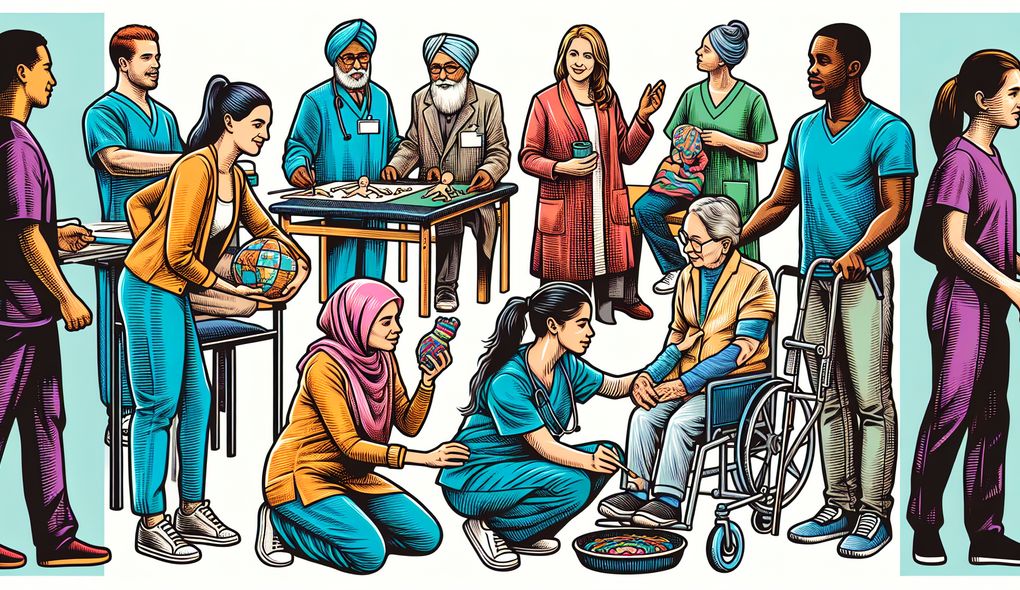How do you use therapeutic techniques and interventions to improve patients' quality of life? Can you give an example of a successful case?
SENIOR LEVEL

Sample answer to the question:
As an Occupational Therapist, I use a variety of therapeutic techniques and interventions to improve patients' quality of life. One example of a successful case is when I worked with a patient who had suffered a stroke. I used a combination of physical exercises, adaptive equipment, and cognitive retraining to help the patient regain their independence in daily activities. We focused on improving their mobility, coordination, and cognitive skills. Throughout the therapy sessions, I closely monitored their progress and adjusted the treatment plan accordingly. The patient made significant improvements in their ability to perform self-care tasks and engage in meaningful activities. This not only enhanced their physical well-being but also their overall quality of life.
Here is a more solid answer:
As an Occupational Therapist, I employ a wide range of therapeutic techniques and interventions to enhance the quality of life for my patients. For instance, I worked with a stroke patient who had difficulty with mobility and self-care tasks. To address these challenges, I used a holistic approach, combining physical exercises to improve their strength and coordination, adaptive equipment to aid in their activities of daily living, and cognitive retraining to enhance their cognitive skills. Throughout the therapy process, I continuously monitored the patient's progress, regularly assessing their abilities and limitations to tailor the treatment plan effectively. This personalized approach allowed us to achieve remarkable results, with the patient significantly improving their motor skills, regaining independence in self-care, and participating in meaningful activities. By collaborating with a multi-disciplinary team, including physicians, nurses, and speech therapists, we ensured comprehensive care and facilitated a holistic recovery for the patient.
Why is this a more solid answer?
The solid answer expands on the basic answer by providing more specific details about the candidate's therapeutic techniques and interventions. It also addresses all the evaluation areas and aligns with the job description. However, it could still benefit from more emphasis on leadership and mentoring, as indicated in the job description.
An example of a exceptional answer:
As a Senior Occupational Therapist, my expertise in therapeutic techniques and interventions allows me to make a significant impact on the quality of life of my patients. For instance, I had the privilege of working with a stroke patient who faced multiple challenges in their recovery journey. In addition to motor deficits, they experienced cognitive impairments and emotional struggles. To address these complex needs, I developed a comprehensive treatment plan that integrated various evidence-based interventions. We focused not only on physical rehabilitation but also on cognitive retraining, using strategies like memory exercises and problem-solving tasks to promote mental well-being. As a part of the therapy process, I also fostered a supportive environment by involving the patient's family and collaborating closely with other healthcare professionals, such as psychologists and social workers. This multidisciplinary approach ensured a holistic and patient-centered care experience. Through continuous monitoring and adjustment of the treatment plan, the patient showed remarkable progress in their physical, cognitive, and emotional domains. They regained mobility, relearned essential life skills, and developed effective coping mechanisms. Witnessing this transformation was incredibly rewarding, as it meant that the patient regained their independence and contributed to meaningful activities that brought them joy. By sharing this successful case during workshops and training sessions, I aim to inspire and educate fellow occupational therapists on the power of therapeutic techniques and interventions in enhancing patients' quality of life.
Why is this an exceptional answer?
The exceptional answer further enhances the solid answer by providing even more specific details and addressing the complex needs of a stroke patient. It highlights the candidate's ability to provide patient-centered care and collaborate with a multidisciplinary team, aligning well with the job description. Additionally, it emphasizes the candidate's leadership potential by mentioning their role in sharing successful cases through workshops and training sessions.
How to prepare for this question:
- Familiarize yourself with a variety of therapeutic techniques and interventions commonly used in occupational therapy.
- Reflect on past cases or experiences where you successfully improved patients' quality of life using therapeutic techniques. Be prepared to articulate the specific interventions employed and the outcomes achieved.
- Stay updated on current research and evidence-based practices in the field of occupational therapy.
- Highlight your ability to collaborate with a multi-disciplinary team and showcase instances where you effectively worked together to provide holistic care.
- Demonstrate your commitment to ongoing professional development by mentioning any additional certifications or courses you have pursued in the field.
What are interviewers evaluating with this question?
- Therapeutic techniques and interventions
- Patient progress monitoring
- Personalized therapy plans
- Collaboration with multi-disciplinary team

